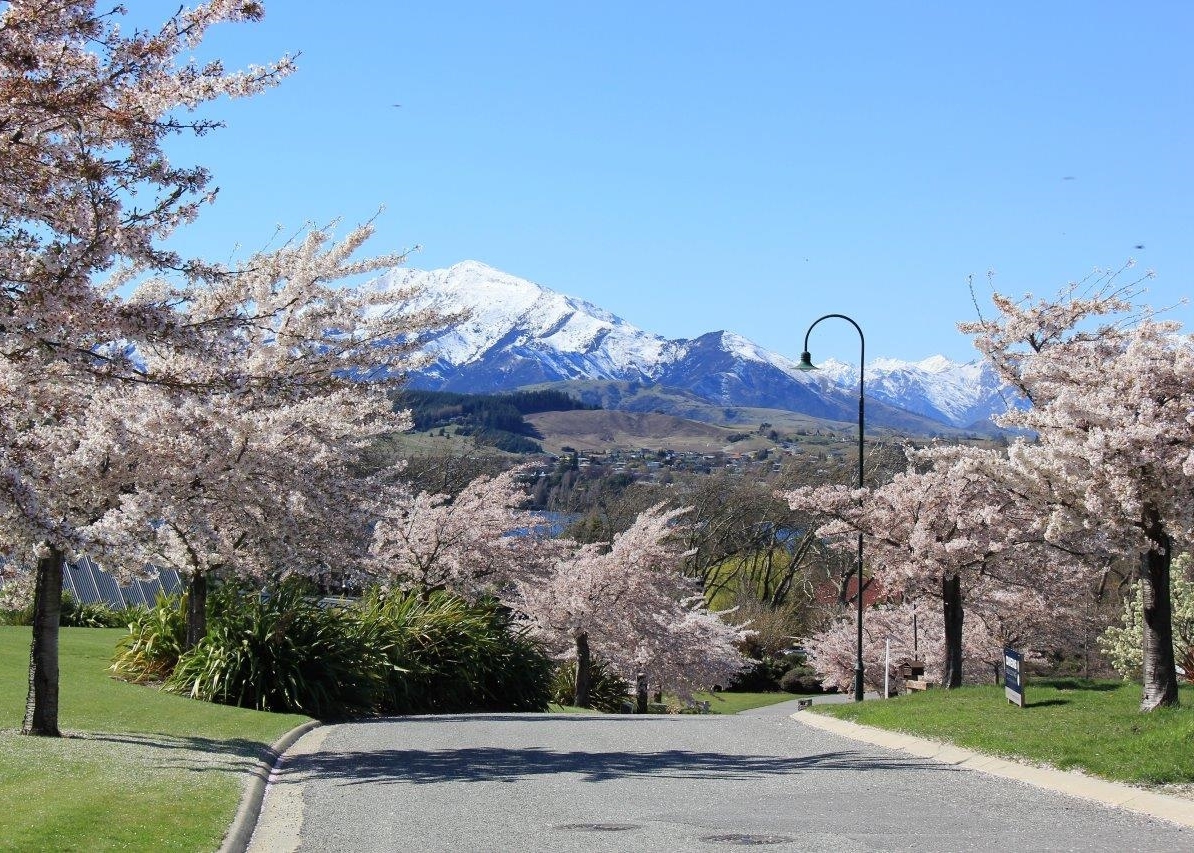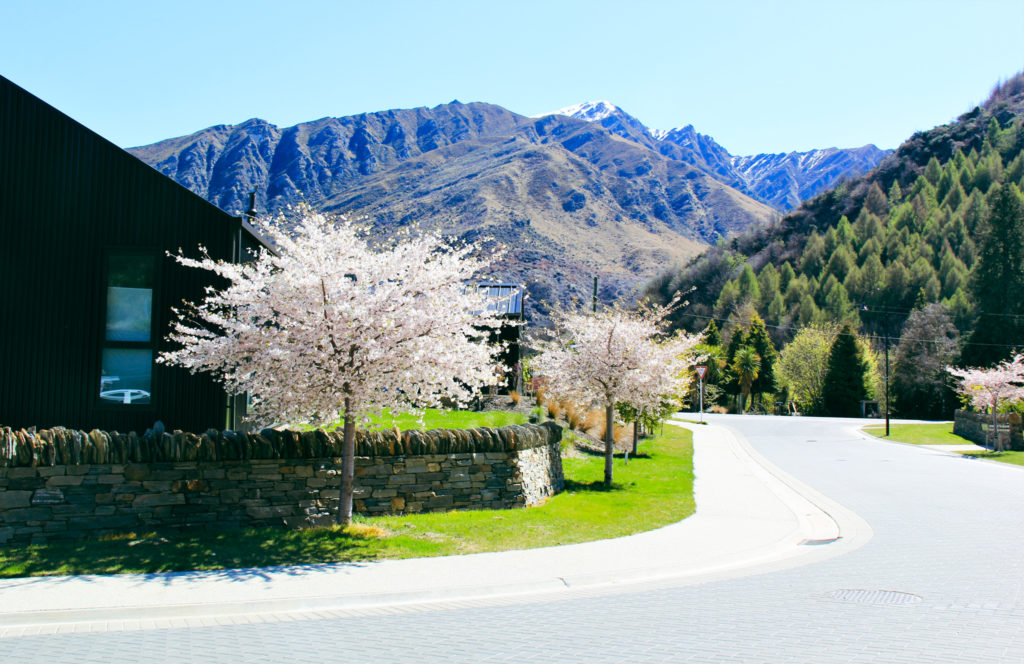Cherry Blossom Trees: A Beauty of Significance

Every year in Japan, groups of family and friends gather for a ‘hanami’ party, or ‘flower-watching’ party. They lay picnic blankets on the grass surrounding the trees. Then they eat. They talk and they drink. They soak up the literal beauty of the tree, the romantic and cultural beauty of the tree… and more than a little Sake. This is repeated every year, and has been for hundreds of years.
The most important thing in this scene is the tree itself, the Cherry Blossom. Known as ‘Sakura’ in Japan, the Cherry Blossom is entwined with the lives of Japanese people, its beauty breathing meaning into the words of poems and bringing symbolism to film and theatre. To learn about the beauty of the Cherry Blossom is to learn about the importance of trees, and how mankind draws inspiration and meaning from nature.
The Visual Beauty of the Cherry Blossom
It can be argued that there is no more beautiful blossom in the world than that of the Cherry Blossom. The soft and delicate appearance is gently intoxicating. It draws you in, washing away stress and relieving burdens. The blossom is ‘felt’ as much as it is ‘seen’.
Maybe that’s the secret too. It’s not just that the Cherry Blossom is so visually appealing, it’s because witnessing the blossom invokes a calmness and sense of wellbeing. It’s not so much that the shades of blush white and vibrant pink are easy to look at. It’s that they promote a tranquility that is all too rare in the modern world.
Or just maybe the secret is because those delicate flower petals drop to the ground precisely when they are at their most beautiful. While most flower petals will weep, fade and then drop, the Cherry Blossom petals are full of vitality and at their peak when they fall. The result is a soft carpeting of beautiful petals full of colour and looking incredibly inviting. But you need good timing to witness it – the blossom lasts just a few weeks. Beauty really is fleeting.

The Historical Beauty of the Cherry Blossom
It would be difficult to overestimate the importance of harvest in ancient Japan, or elsewhere for that matter. A bountiful harvest did not just mean sustenance for villagers, it was tied to religion and blessings. The Cherry Blossom was originally used to divine the year’s harvest, thus having an important role in Japanese life.
Later, around 700 years ago, the Cherry Blossom was used to symbolise the wabi-sabi philosophy. In it, beauty is considered imperfect, the philosophy acknowledging the simple reality that ‘nothing lasts, nothing is finished, and nothing is perfect’. The Cherry Blossom is an ideal symbol of this philosophy. It reminds us to slow down and enjoy life, as its beauty doesn’t last.
This ties in with Buddhist and Shinto ideals, for which the Cherry Blossom is also important, being commonly planted around the grounds of Buddhist Temples. The connection is similar in that it’s the impermanence of the Cherry Blossom which symbolises a belief in the impermanence of life. Death is considered part of life and in Japanese culture the subject of death is to be met squarely, with tranquillity and acceptance, rather than be avoided.
It may all sound a little melancholic and even sad. And maybe it is. In Japanese movies, a scene with falling petals from a Cherry Blossom Tree will symbolise the death of someone young (remembering the petals will fall when at their peak). Yet the Cherry Tree, like Japanese culture itself, and as described briefly above, has a different relationship with death from Western culture.
That different relationship between life and death means those ‘hanami’ parties, where groups gather to picnic beneath the Cherry Blossom trees in April, are a positive affair. They are timed with new beginnings, the start of a new financial year and the start of a new school year. They symbolise a process of renewal.
It’s complicated. And at its essence, it’s telling us to slow down and enjoy life, imperfections and all. That’s what the Cherry Blossom is telling us to do. Which might be just why they are so calming to look at.

Our Favourite Cherry Blossom Trees
It’s hard to pick a singular favourite Cherry Blossom. Each has a feature or backstory to distinguish it from others. These are some of those we find the most fascinating:
PRUNUS serrulata ‘Kanzan’
Dating back to the Edo Period (1603 to 1867) in Japan, this has long been considered one of the most decorative cherry trees. The rich double flowers of spring are held in pendant-like clusters, and as the petals unfurl it gives the impression the whole tree is growing and gently bubbling into the season. Reddish-copper leaves emerge and turn to a dark green in summer, forming a dense canopy which offers shade below. Autumn is orange and bronze. In all seasons, it makes for a graceful ornamental tree which will add positively to any landscape.
PRUNUS serrulata ‘Shimidsu Sakura’
The wonderfully named ‘Moonlight Cherry’ was often planted by the river, close to Buddhust temples in ancient Japan. They certainly have a very calming elegance, with double flowers opening in vibrant pink before fading to blush white. As a smaller tree, it doesn’t overpower the landscape but rather gently adds a visual flourish which is undeniably calming and attractive. As such, it makes for a perfect garden ornamental tree. Despite the diminutive size ( 4 x 5m), this deciduous tree is quite hardy.

PRUNUS serrulata ‘Shirotae’
A wonderfully formed example with a spreading horizontal habit full of semi-double snow-white flowers.. Those fragrant flowers gracefully give way to the most exquisite shades of orange, gold and crimson in an Autumnal show that stands in contrast to virtually any backdrop. Hardy and deciduous, the Shirotae cherry will grow to 5 x 5 m and is ideal as a specimen or in group plantings.
PRUNUS serrulata ‘Tai Haku’
The ‘Great White Cherry’ is actually a grafted specimen from the garden of ‘Cherry Ingram, an Englishman who was fascinated with the Japanese Cherry Trees and is credited by the prize winning author, Naoko Abe, as saving the Cherry Trees in the first quarter of the 1900’s. This is one of the largest and most spectacular versions, with fragrant, large flowers of pure white. The contrast against the coppery tones of the leaves in spring is quite remarkable and sets it apart as a specimen tree, or it is often used in avenue plantings. Deciduous, it will grow to 8 x 6 m.
PRUNUS yedoensis
Known for its mass of almond scented white flowers in early spring, as the seasons progress, it changes from the warming orange of summer to the type of Autumn red that typifies the romance of the season. The Yoshino Cherry is used extensively in street and garden plantings throughout Southland and Canterbury, a testament to its hardy nature and ability to cope well in both dry and wet climates. Deciduous, it will grow to 5 x 4m and has a compact vase to spreading form.
The Cherry Blossom is a truly remarkable tree. With just a few weeks of bloom each year, it has influenced centuries of tradition.
That it tells us to slow down and take it easy is quite nice too.
Archives
- April 2024
- March 2024
- February 2024
- January 2024
- December 2023
- November 2023
- October 2023
- September 2023
- August 2023
- July 2023
- June 2023
- May 2023
- April 2023
- March 2023
- February 2023
- January 2023
- December 2022
- November 2022
- October 2022
- September 2022
- August 2022
- July 2022
- June 2022
- May 2022
- April 2022
- March 2022
- February 2022
- January 2022
- December 2021
- November 2021
- October 2021
- September 2021
- August 2021
- July 2021
- April 2021
- March 2021
- February 2021
- January 2021



